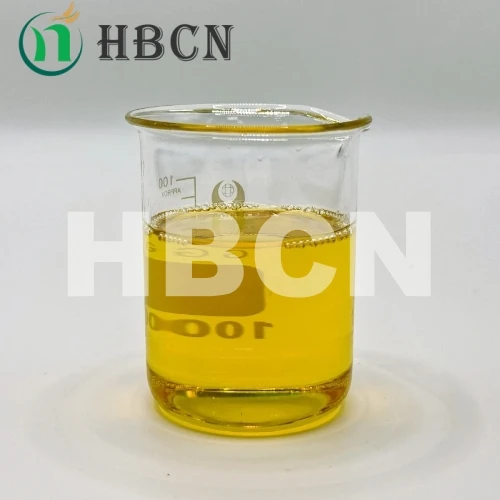
Nov . 11, 2024 11:04 Back to list
thiamethoxam 25%
Thiamethoxam An Overview of a Modern Insecticide
In the realm of agriculture, effective pest management is crucial for ensuring crop yield and quality. Among the various tools available to farmers, synthetic insecticides play a significant role. One such insecticide that has garnered attention over the years is Thiamethoxam, a member of the neonicotinoid family. Understanding its properties, applications, regulatory aspects, and environmental impact is essential for anyone involved in agriculture or interested in sustainable practices.
What is Thiamethoxam?
Thiamethoxam is a systemic insecticide, meaning it is absorbed by plants and provides long-lasting protection against a variety of pests. It works by mimicking the natural neurotransmitter acetylcholine, binding to nicotinic acetylcholine receptors in the nervous systems of insects. This leads to overstimulation of the nervous system and ultimately results in the death of the targeted pests. It is effective against a broad range of insects, including aphids, whiteflies, and beetles, making it a valuable tool for farmers.
Applications in Agriculture
Thiamethoxam is widely used in various crops, including vegetables, fruits, and grains. Its versatility allows it to be applied through soil treatment, seed coating, or foliar spray, giving farmers multiple options depending on their specific needs. One of the key advantages of Thiamethoxam is its systemic properties, which ensure that the insecticide is distributed throughout the plant, providing protection even in hard-to-reach areas where pests may thrive.
Additionally, Thiamethoxam has been part of integrated pest management (IPM) strategies, allowing farmers to use it in combination with biological control methods or other more environmentally friendly practices. This approach is crucial as it helps to minimize resistance development in pest populations, a serious concern in modern agriculture.
Regulatory Status and Concerns
thiamethoxam 25%

Despite its effectiveness, the use of Thiamethoxam has been met with regulatory scrutiny due to concerns about its impact on non-target organisms, particularly pollinators like bees. Studies have indicated that neonicotinoids can affect bee health, leading to declines in bee populations, which are vital for pollinating many crops. As a result, several countries have implemented restrictions on the use of Thiamethoxam and similar products.
In the European Union, for example, bans have been put in place for certain uses of neonicotinoids in response to environmental and health concerns. Such regulations are crucial to ensure that agricultural practices are sustainable and do not adversely affect the wider ecosystem. Farmers using Thiamethoxam must navigate these regulations carefully, often seeking alternatives or integrating measures to protect beneficial insects.
Environmental Impact
The environmental impact of Thiamethoxam extends beyond just pollinators. As a systemic insecticide, it can persist in the environment, leading to potential accumulation in soil and water systems. Such persistence raises concerns about water contamination and the impact on aquatic life. Understanding the degradation pathways of Thiamethoxam and its metabolites is crucial for assessing its long-term environmental risks.
Research is ongoing to better understand the fate of Thiamethoxam in various environments and its potential effects on biodiversity. Farmers and agronomists must be aware of these factors and consider implementing best management practices that reduce pesticide runoff and exposure to non-target species.
Conclusion
Thiamethoxam represents a powerful tool in the agricultural pest management arsenal, offering effective control against a wide range of pests. However, its use is not without challenges and controversies, particularly concerning its impact on pollinators and the environment. As the agricultural sector continues to evolve, it is imperative for farmers, researchers, and policymakers to work together to find balanced solutions that maximize productivity while preserving ecological integrity. Sustainable agriculture must consider both the benefits and risks associated with chemical uses, ensuring that future generations can continue to rely on a healthy and productive farming landscape.
-
Azoxystrobin: Broad-Spectrum Fungicide Solutions
NewsAug.11,2025
-
Best EPA Boscalid: Superior Crop Fungicide for Max Yields
NewsAug.11,2025
-
Best Willowood Imidacloprid: Superior Pest Control Solutions
NewsAug.10,2025
-
Best EPA Boscalid Fungicide: Ultimate Crop Protection
NewsAug.09,2025
-
Cyprodinil Fungicide: Broad-Spectrum Crop Protection
NewsAug.08,2025
-
Tembotrione Herbicide: Advanced 8% OD for Broad Spectrum
NewsAug.07,2025
